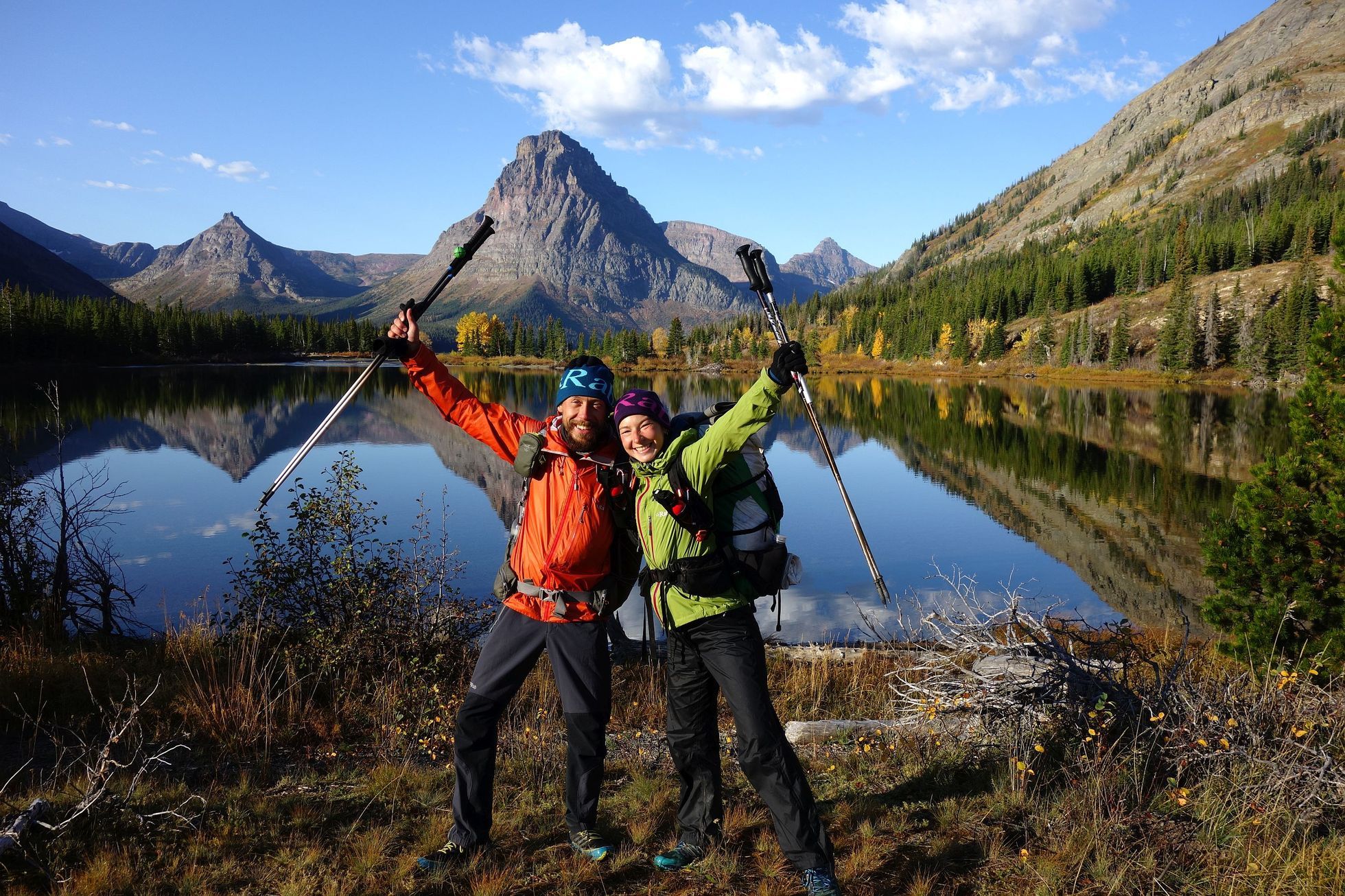Aimless walks are not for him, he prefers to go on foot for hundreds or even thousands of kilometers long. Extreme endurance and traveler Petr Kosek goes on his expeditions very lightly, with a maximum of six kilos on his back. “The equipment for a weekend is the same as for a three-month trek,” he says. For Aktuálně.cz, he describes how to train for long-distance routes, what to pack and how to stay dry in the middle of the wilderness.
“My first expedition at the age of twenty was a disaster,” admits the traveler Petr Kosek with hindsight. He has been active in sports since childhood and went on a longer trek with his friends to the Romanian mountains for the first time. At the same time, he was carrying a twenty-eight kilogram backpack on his back the whole time. “Instead of one quality waterproof jacket, I took a dubious one and three fleeces just to be sure. And that’s how it was with the other things in my backpack,” he grabs his head.
Over the years, however, he gathered experience on other trips to Europe, South America and the United States, where he regularly went both during his studies and during his work as a technologist in an automobile company. Whenever he had the opportunity, he went to discover the nature there. After rock climbing in Yosemite, he learned about the so-called Pacific Ridge, a 4,200 kilometer long long-distance trail in the western US. A person usually goes through it in four to six months.
“That’s exactly what I needed. To have a destination, not just to wander around aimlessly,” says Kosek. When he and his ex-girlfriend managed to conquer the route, they became the first Czechs ever to complete it in one go. The Pacific Ridge is part of the so-called Triple Crown, the three most famous long-distance treks in the USA. Next to it, the famous trio also includes the Continental Divide Trail, which is over 4,500 kilometers long, and the Appalachian Trail, which is 3,500 kilometers long. Over time, Petr Kosek beat them all, again as the first Czech.
But he has already chosen a different tactic for the mentioned treks – he tries to pack things so that he carries a maximum of six kilos of equipment on his back. According to him, it is important not to underestimate preparation when traveling ultralight. “I always say that I’m going to do my homework. I spend tens of hours preparing for the shorter, hundred-kilometer trails. I’ve gone for hundreds on the longest, thousand-kilometer ones. Every time I look at the climate data in the given area for the last 20 years and the altitude profile of the route and accordingly then I choose the equipment. The more time I spend on preparation, the less I end up packing. The equipment for a weekend trip is basically the same as for a three-month trek,” he says.
Most importantly, stay dry
Thanks to traveling lightly, he can react to unpleasant situations. “When I know that I have a fifty-kilometer stretch without water, it’s easier to go through it with a few kilos on my back in one day,” he explains.
According to him, in order to be able to go on such long routes, it is important to be on your feet as much as possible during training. “It’s a good idea to start walking to work or get a positioning table for the office and work standing up. If we also exercise for this, of course we will also strengthen our body,” he advises.
He himself says that you can get used to walking quickly. “Everyone can go on a thousand-kilometer trek if they start slowly,” he claims. “On the Pacific Ridge, we met pensioners who walked ten kilometers a day for the first two weeks, then fifteen kilometers. And in a short time they started walking forty-kilometer sections a day,” he describes.
Of course, the Czech Republic does not have such well-known treks as the American ones. For beginner enthusiasts of long-distance routes, Petr Kosek recommends, for example, the popular Stezka Českem, Jiráské cesta through Orlické hory, Zlatá stezka in Český raj or Modrá Hřebenovka along the northern borders. The 750-kilometer SNP Heroes’ Route across Slovakia is also a challenge.
“What does my backpack contain?” think about it. “Dampness is the worst, not frost, so we mainly have to have things that keep us dry. Because when we’re dry, we stay warm and don’t run the risk of hypothermia. For that I need either an ultralight tent, or I use a tarp even more, which is a tent without a floor. It weighs under half a kilo and is easier to work with,” he explains.
“Furthermore, I take a waterproof jacket and trousers with me. If I want to walk hundreds of kilometers, I have a sufficiently warm down sleeping bag and an inflatable mat, because I’m thin and I need comfort for recovery. But when I’m walking, I can’t do without warm layers – Polartec Alpha jackets, which holds a lot of air and is warm, but I don’t sweat in it. When I’m setting up camp or cooking, in short, when I’m not racking up miles, I exchange it for a down jacket. And last but not least, of course, I have a first-aid kit, a power bank, a water filter and a headlamp,” he enumerates.
As he further admits, the biggest part of the backpack is taken up by water and food. “I eat terribly,” Petr laughs. “When I need a large supply of calories, I always carry a bottle of olive oil with me, which I add to every meal. I scoop peanut butter by the spoonful, I eat hard cheese, nuts and chips. But the stomach must be satisfied and full, so I also take potatoes with me porridge and Chinese soups.” Petr Kosek tries to collect water continuously along the way every day. Already during the mentioned route planning, he makes notes on the maps about water sources, which he says takes the most time.
It should be noted that hundreds and thousands of kilometers long routes are not completed all the time just outside of civilization in the middle of the wilderness. In the USA, for example, he visited cities once every seven to ten days to replenish supplies, eat at a restaurant or wash his clothes somewhere other than in a stream.
The pitfalls of the wilderness? Meeting with a rattlesnake and thunderstorms
He used years of experience, hundreds of sleepless nights in nature and thousands of kilometers traveled in the middle of the wilderness to establish Nalehko e-shopwhich he now runs together with friends, also ultralight travel enthusiasts.
As for hiking the trails of the aforementioned Triple Crown in the United States, they are not financially demanding. However, it depends on the requirements. “The objective is to count on 35,000 crowns per month, while you will also be able to sleep in cities and eat in restaurants. Basically, these are the same requirements as living in the city. Only a much bigger adventure awaits you,” says Kosek.
Photo: Petr Kosek
In addition, according to him, travel in America is distorted by commerce. “But the truth is that it has more wilderness than, for example, South America. It does have areas without civilization, but you can’t walk through them. I’ve only experienced nature, which I walk for a week straight and not meet a single person, in the USA and Canada,” highlights the traveler .
Nevertheless, some situations and encounters can be quite unpleasant. Not with people, but with the weather and animals. “Sometimes something goes wrong, for example a storm catches you on the ridge, the lightning around me terrified me at the time,” he admits. He considers the situation when he almost stepped on a rattlesnake among the stones in a deep canyon to be the worst. “The other animals I met along the way know very well that the biggest predator is man and it’s good to avoid him,” he says.
In the future, he would like to complete the Arizona Trail or the Pacific North West Trail within North America. However, he would like to return to the Pacific Ridge in the following years, but this time with his current wife and two children.

